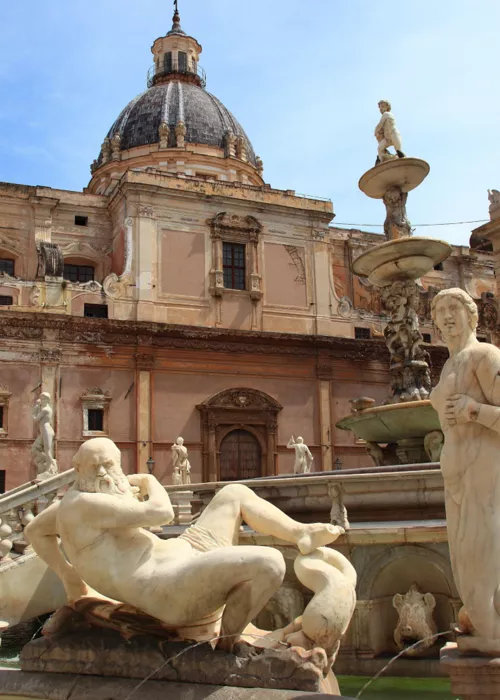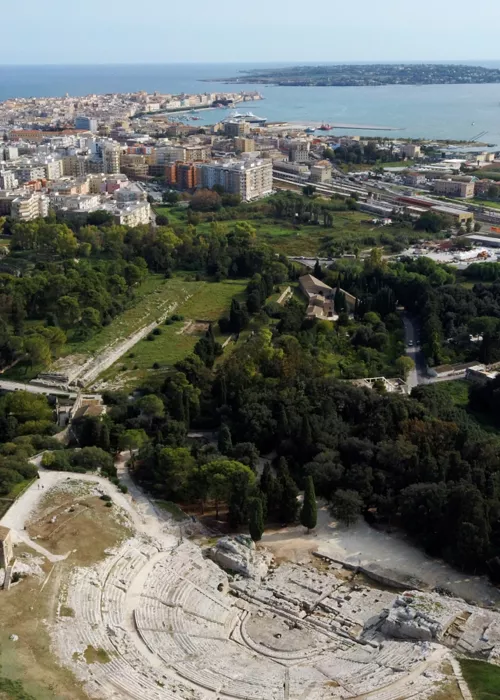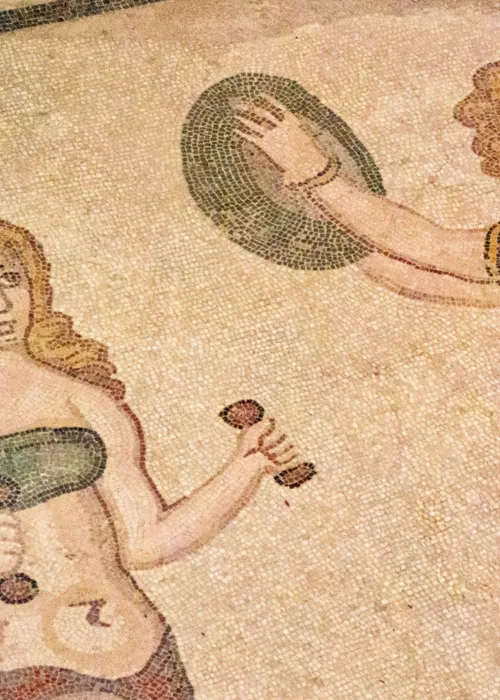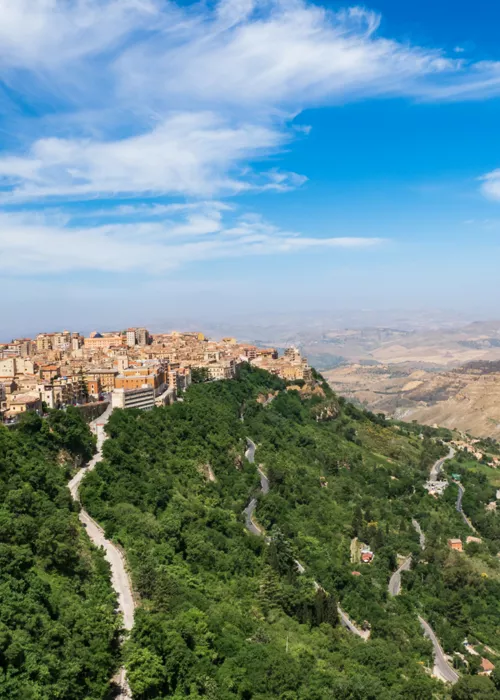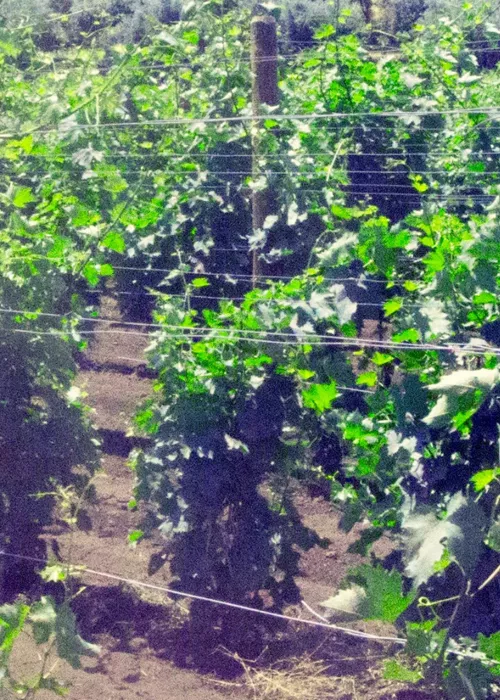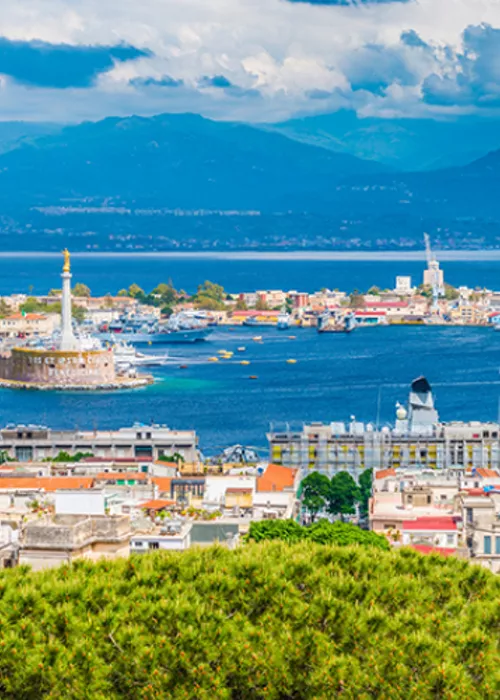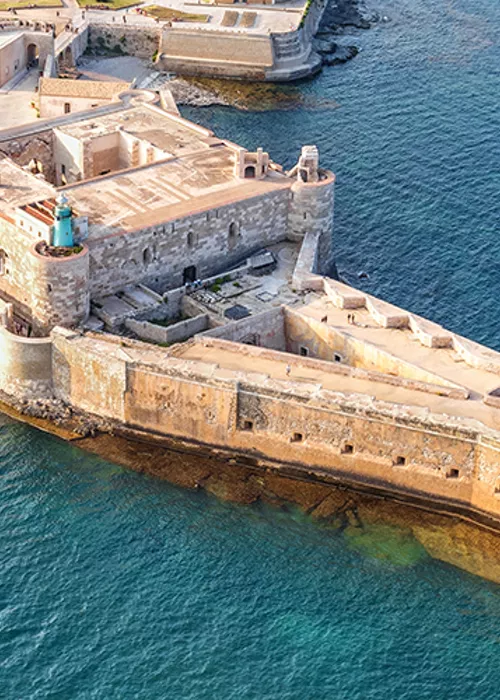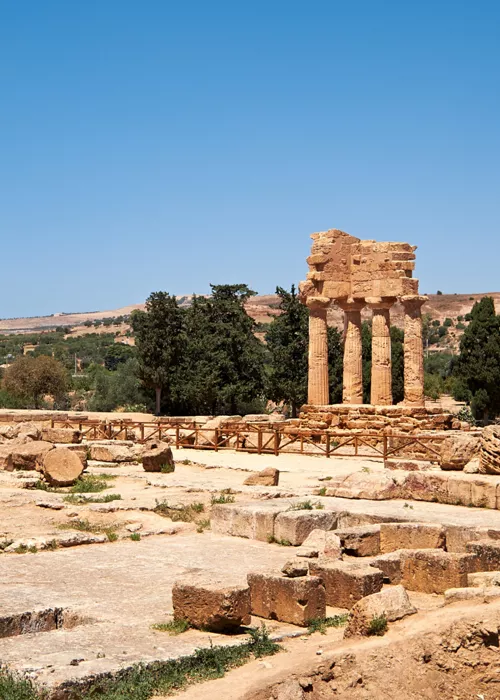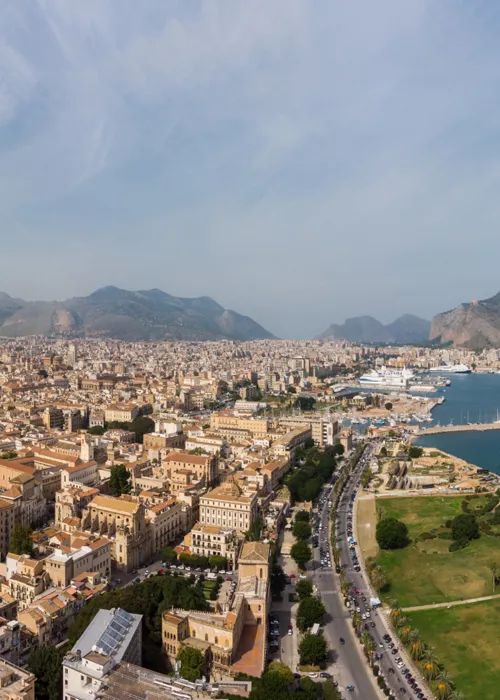Cefalù

The choice of Cefalù as a holiday destination could easily be based solely on the sandy beach, which is part of a beautiful historic centre full of picturesque views and photogenic streets. But that's just one reason to come here. There are many more, starting with the rocky mass of the Castle, which dominates the town and the skyline as far as the Cathedral with its majestic towers soaring above the red rooves, and the Bastion of Capo Marchiafava – part of the 17th-century military fortifications facing the sea below the Castle. Then of course there is the enigmatic smile of the Unknown Man painted by Antonello da Messina, which attracts visitors to the Mandralisca Museum.
Cefalù Castle

Cefalù Castle stands on a limestone promontory at the very tip of the Madonìe mountains. The castle has been built by man over the centuries, as you can see when you climb the steep path leading up from the old town. But the setting is entirely natural: a stunning mountain with panoramic views, rising up 270 m above the Tyrrhenian Sea. Cefalù Castle an integral part of the town's landscape, dominating its skyline and forging its identity. It's also something more than a castle, as it offers the opportunity for walks along the panoramic trail.
Cefalù Cathedral

The Basilica of Cefalù, built in 1131, consists of a nave and two aisles flanked by tall columns with decorated columns and pointed arches. In the right-hand aisle is a Romanesque baptismal font, while the apse, the adjoining walls and the vault are a triumph of 12th-century mosaics, which predate those of the cathedral in Monreale by a couple of decades. The main highlight of the apse is a spectacular Christ Pantocrator, meaning "Almighty", "lord of the world", "ruler of all".
Traces of more recent work can be found in the arches and walls of the aisles, clad with marble and stucco. The windows in the nave and centre of the façade are the work of a contemporary master. The cloister annexed to the Cathedral, originally from the same century as the mosaics, was partly rebuilt following a devastating fire in the 16th century.
Mandralisca Museum

The only museum in the historic centre of Cefalù is named after a noble local family, and has its origins in the artistic, archaeological, coin and natural history collections assembled in the 19th century by Enrico Piraino, Baron of Mandralisca. This nobleman was very different from other aristocratic collectors such as the one in The Leopard by Giuseppe Tomasi di Lampedusa. Conversely, at a time when illiteracy was widespread, Piraino left behind enough funds to build and maintain a school of higher education.
The Museum's fame goes beyond its famous founder: today, it has an international reputation, mainly because it is home to the Portrait of the Unknown Man, painted in the second half of the 15th century by Antonello da Messina. The subject of the painting has a very unusual smile, both in terms of the facial expression and the artistic rendering: some see it as ironic, which it probably is.
Collesano

To reach Collesano – which, coming from the sea, is the gateway to the Madonìe mountain ridge – you can take the direct route from Cefalù. But it's worth taking a slight detour to see part of the Tyrrhenian coast, to stretch out your visit to the archaeological site of Himera.
The town of Collesano is interesting, especially its well-preserved medieval centre with its evocative atmospheres and fine buildings. A highlight is the Mother Church, with a 15th-century side portal and beautiful decoration. The importance of this site as a tourist landmark is clear, as here you will find the UNESCO World Geopark of the Madonìe, a landscape of rugged beauty dotted with fortresses and castles. This is where you will find all the evidence of medieval Sicily, from the city of Cefalù itself to the two Petralìa towns and Nicosìa, an ancient Lombard settlement planted like a flagpole in the centre of the island.
Petralìa Soprana

By driving non-stop from Collesano along the provincial road 54, you can reach Petralìa Soprana in just over an hour.
The little town is perched on an outcrop, with three splendid viewpoints from Piazza del Duomo, the church of Loreto, and the Carmine. The main attractions are the two churches, especially the Mother Church dedicated to Saints Peter and Paul.
The reason why Petralìe is often spoken of in the plural is that three kilometres further along the provincial road, you come to Petralìa Sottana, a village which has an Orange Flag from the Italian Touring Club.
Petralìa Sottana

Petralìa Sottana is the only village in Sicily to hold an Orange Flag from the Italian Touring Club. Set in the heart of the Madonìe, the village is almost 1000 m above sea level. Compact and well-preserved with its medieval quarters, noble palaces and churches along the main street, it also has a Baroque Mother Church or Church of the Holy Trinity, which is home to a famous work by Gagini. If you are keen on geoscience and minerals, you can call in at the "Antonio Collisani" Civic Museum, which has interesting displays on the local geology, while the active types can visit the nearby adventure park. The natural environment has plenty to offer: in winter there are the ski slopes of Piano Battaglia, while in summer, you can take long walks along part of the Sicilian Way of St Francis, which passes through the town. And finally, before leaving the village, take a look at the sea. The views here are outstanding.
Nicosìa

The final destination on our itinerary is about 40 km east of the two Petralìe, along state road number 120. Nicosìa still boasts an important and long history: it was Byzantine as early as the 7th century, becoming Islamic about two hundred years later, before it was conquered by the Normans and colonised by Franco-Germanic peoples. It was these last invasions that resulted in the Basilica of St Mary Major, nestling in the spectacular rolling hills and charming medieval streets, which is inevitably the first place to visit.



